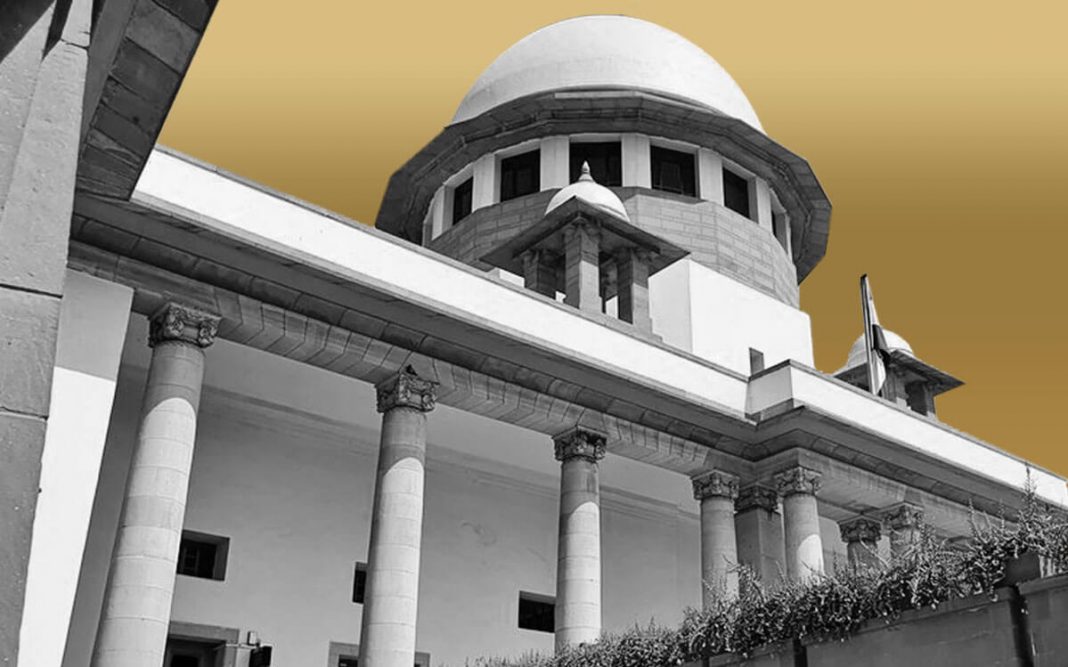By Sanjay Raman Sinha
The Supreme Court is beset with hiccups in its online operations. As the much vaunted electronic systems buckle, people depending on it are thrown in disarray. In August this year, Chief Justice of India DY Chandrachud had launched his brainchild, the SuSwagatam portal. It was part of the CJI’s vision for an automated online system for the entire judiciary and, more specifically for, the Supreme Court. It envisaged cutting down serpentine queues and making life easier for visitors and advocates alike.
But three months down the line, grey areas in operations have surfaced and its effects are spilling all over.
The digital entry/exit system (SuSwagatam portal) streamlines processes for e-passes for entry into the courts. The Supreme Court has five entry gates and one needs an e-pass to enter. However, often one of the entry gates’ system collapses and visitors have to take a long detour to other gates, resulting in extreme rush and crowding.
Speaking to India Legal, Advocate and Information Technology expert Pawan Duggal said, “Artificial Intelligence should be used in these type of systems to make it more effective. At entry points, many visitors are not one-time but repeat visitors too. These names and faces should be entered in a database and saved so that the system database becomes stronger and works efficiently. So there is need for system upgradation, adoption of latest technology (especially machine learning and artificial intelligence) and capacity building. Capacity building means not only more systems but also more effective training to all manpower, so that system is utilized more efficiently.”
Parking for visitors is another perennial problem. The lots are far away and it’s a long walk to the court premises. The parking for advocates is, however, near the court.
The listing of cases at the Supreme Court registry is another issue advocates and litigants have to encounter. The Registry is headed by the Registrar of the Supreme Court. The Registrar oversees the Registry’s management of cases in the Supreme Court. Working closely with the Supreme Court Bench, registrars ensure the smooth and expeditious resolution of cases through case management.
The listing system has been automated and made online. However, a recent fiat by the Registry has created problems. As per Registry orders, any mistake in case documents will annul the filing and the whole process has to be undergone anew. Advocates are caught in this e-filing conundrum. Earlier, the defects were cured by Registry officials, now everything has to be filed from scratch. The filings are to be done in the new building and that is making the process more physically arduous.
As the listing system has gone online, it has no doubt lessened the pressure on the Registrar’s office. However, this relief is not helping streamline the system.
Duggal says, “For full-fledged online registry to kick in, it will take some time. Till then, we should follow the standard operating procedures scrupulously. Since most filings are happening electronically, we should keep a separate batch for such filings, and another batch for physical filings. The manpower needs to be trained for more effective usage of the digital system. Systems need to be upgraded.”
The increased usage of Artificial Intelligence (AI) can go a long way in filtering frivolous cases from serious ones. It can also help decide urgency of matters.
Another systemic issue that needs to be rectified is that of decision of online hearing. Whether a case can be heard physically or online is mentioned only around 9 am. This leads to a rush in the courts as advocates are often not well prepared for a particular mode of hearing. The common refrain is no prior information is given to parties on this count. This needs to be corrected. At least, the mode of hearing should be made public a day in advance. Here also, the human factor comes in and the work can be streamlined.
If the hearing is in hybrid mode, then advocates representing parties have to avail online facilities (if they are in court), then cubicles or seating arrangement with proper WiFi facilities should be provided. Many a hearing is disrupted due to bad WiFi connectivity.
One distinct advantage now is that there is no need to photostat hundreds of pages for filing. The e-copy takes care of it.
In November 2022, CJI Chandrachud had issued a circular introducing a new system of listing in the Supreme Court. Since he assumed office, the CJI had placed registry and judicial reforms as his top priority. The CJI had also introduced automatic listing of cases based on the day on which the petition is filed with the Registry.
In fact soon after taking the oath of office, the CJI had said : “To serve the nation is my priority. We’ll protect all the citizens of India, be it in terms of technology or registry reforms, or judicial reforms.”
Recently, he had pulled up the High Courts for being “tech indifferent”.
Now as the system flounders due to teething problems, it’s incumbent on the CJI that he takes steps to keep the reforms on track.


